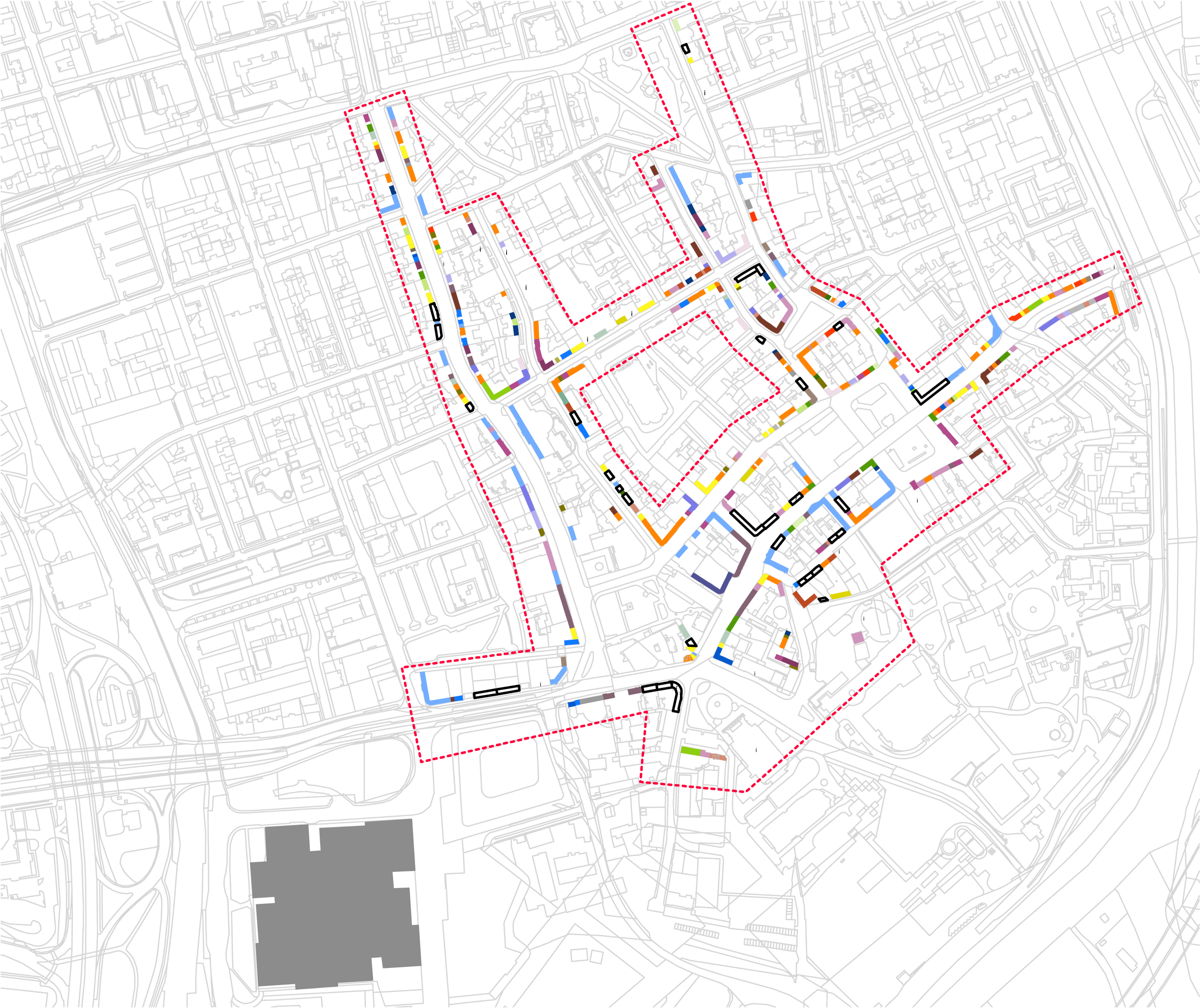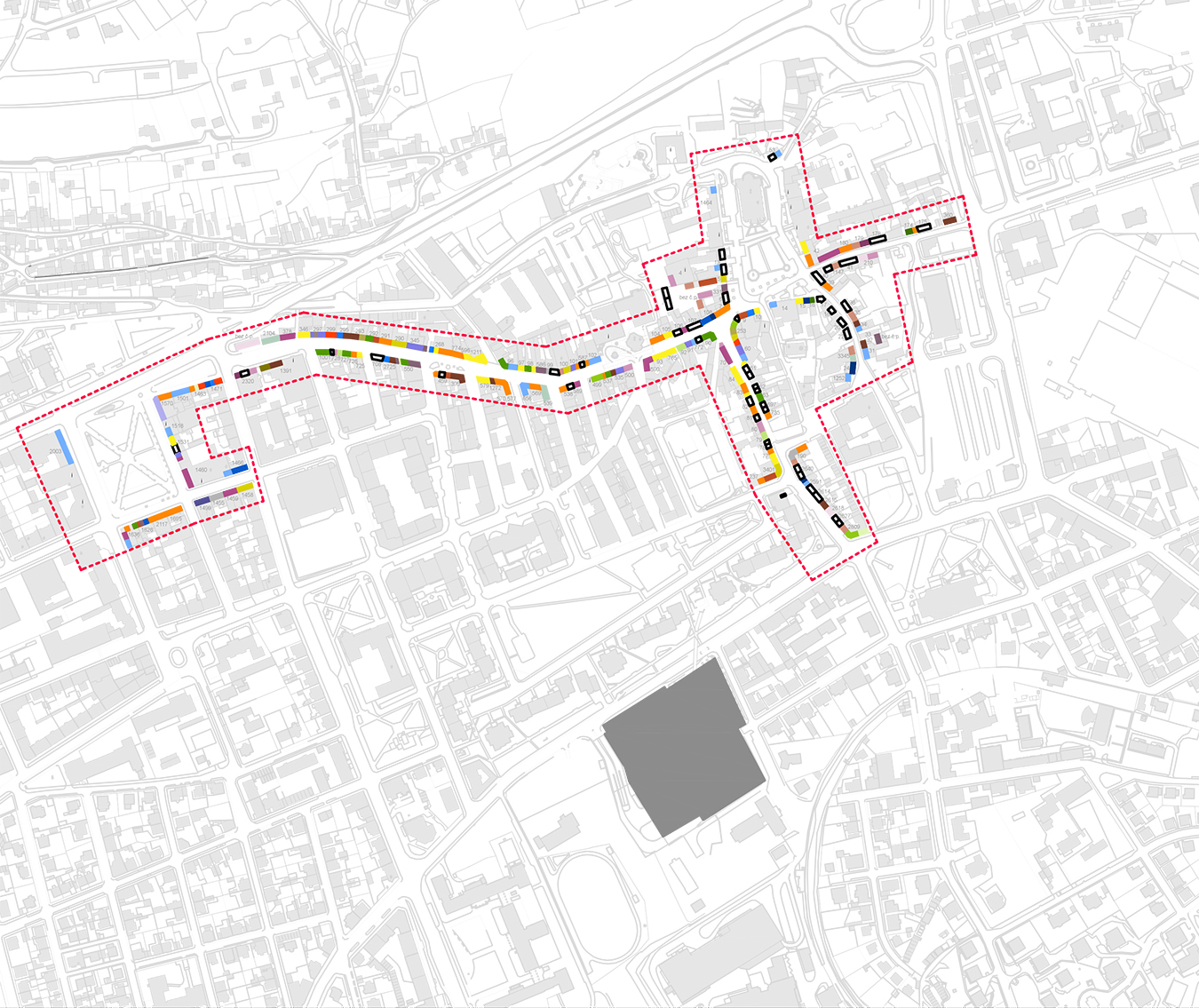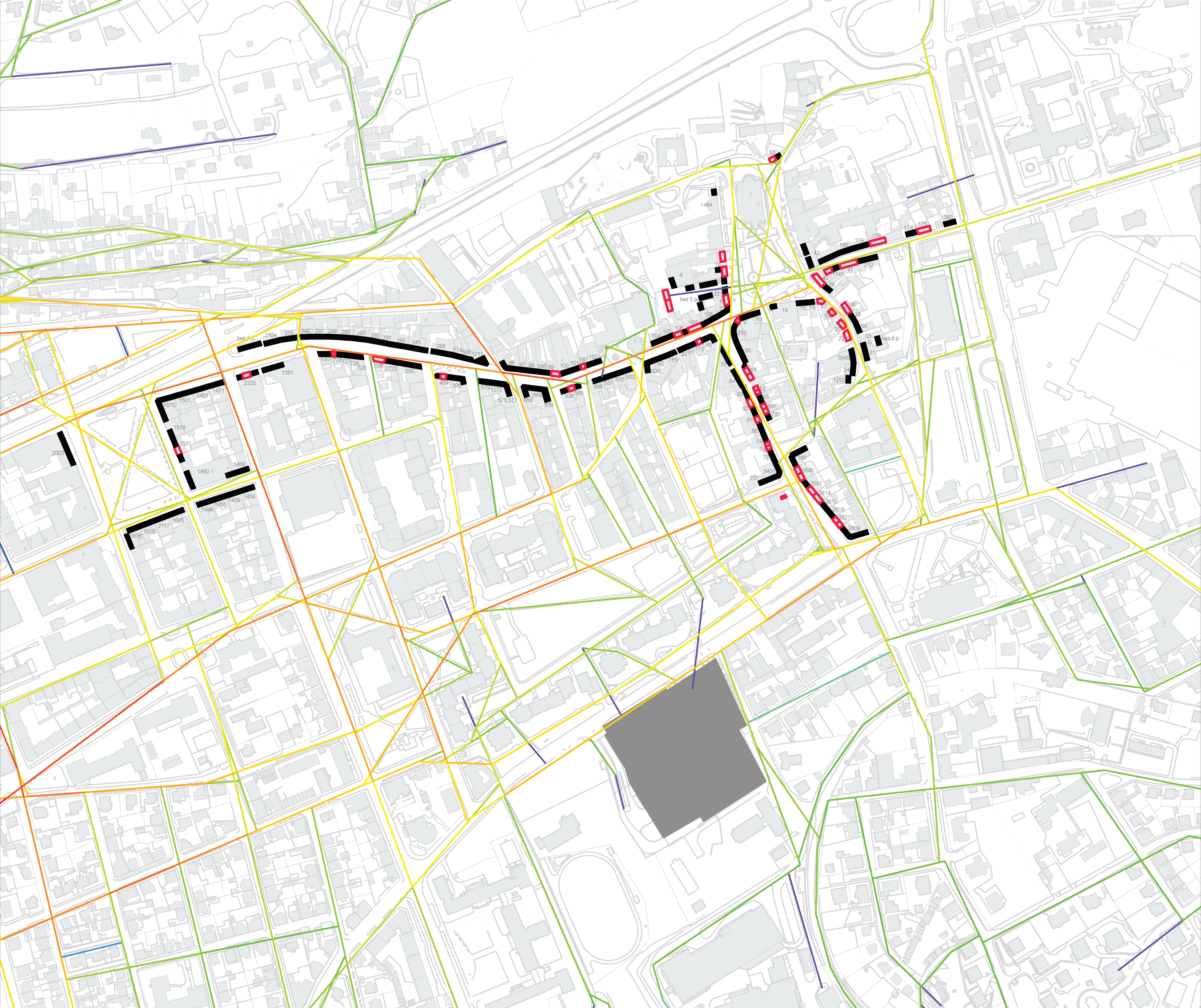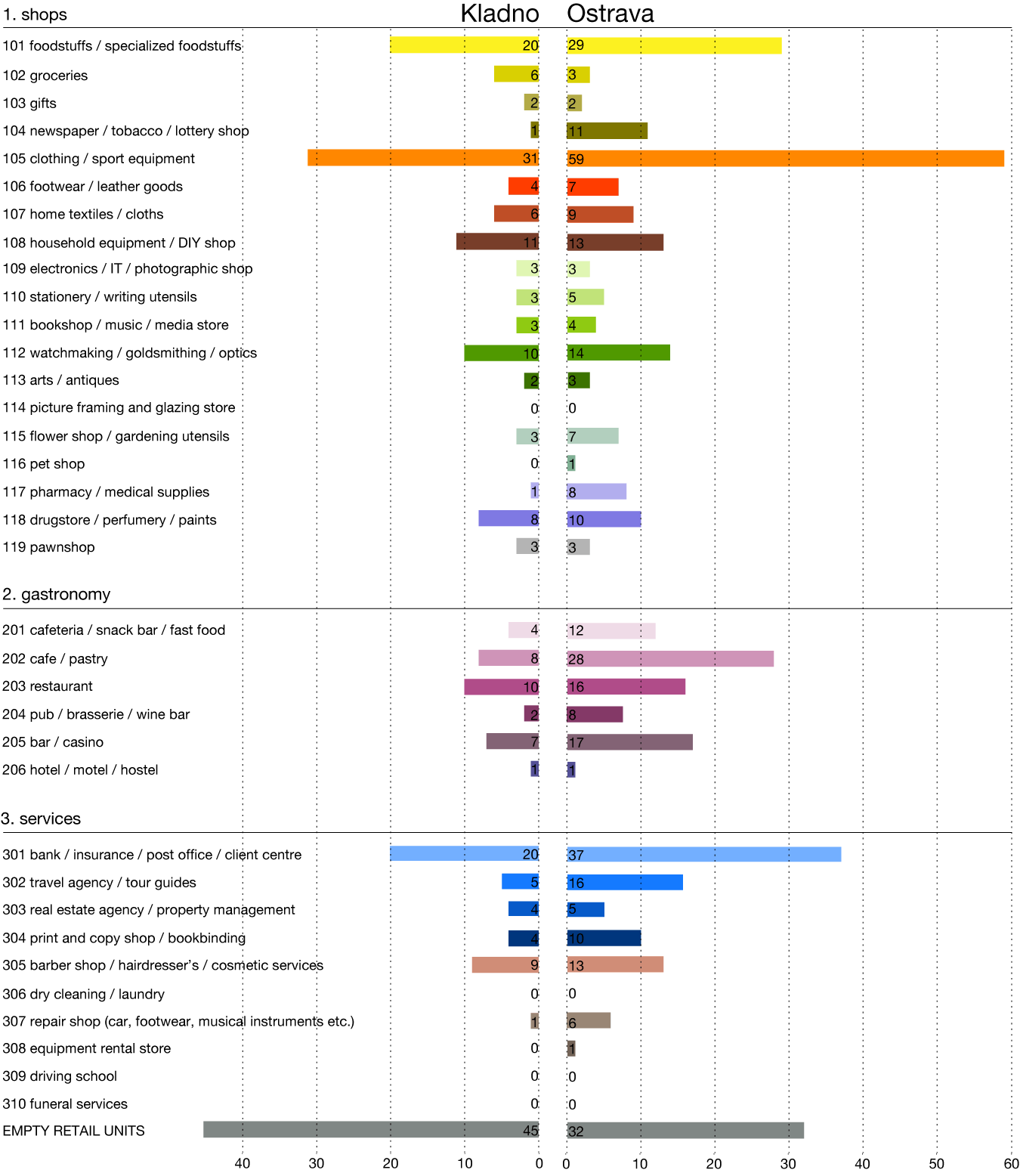The impact of shopping malls on traditional shopping areas in the city

The impact of shopping malls on traditional shopping areas in the city
| Place: | Kladno and Ostrava, Czech Republic |
| Type: |
research funded by Czech Technical University’s student grant programme (Studentská grantová soutěž ČVUT / Students’ Grant Competition CTU, grant No. SGS16/101/OHK1/1T/15) |
| Size: | analysis of Kladno and Ostrava city centre |
| Client: | City of Kladno and City of Ostrava |
| Team: | Veronika Kommová, Lea Dostálová, Radek Kolařík (tutor) |
In the last 25 years, shopping malls have become a part of many Czech cities and, in particular, their centres. This tendency, together with the transition from a centrally driven economy to a market driven one, has had a significant impact on the structure and organisation of retail activities, a trend known as the retail revolution. Although the retail revolution or globalization-related transformation of retail in cities has been a recent theme in social and economic geography, the discussion is – not only in the Czech environment – often missing the urbanists' point of view, even though these transformations influence the sustainability and adaptability of the entire city.
Two case studies from the Czech environment (cities Kladno and Ostrava) observe the location and character of shops in traditional and new retail areas in the city centre. City centres are defined as areas with a mostly compact urban structure. Traditional shopping areas are represented by squares, pedestrian zones or shopping streets, meaning public spaces typically fringed by shops in parterre. New shopping areas are represented by inner-city shopping malls (multi-storey shopping and entertainment centres with underground parking).


Both cities have industrial history and are currently experiencing a process of transformation. The selection of these case studies was also driven by the existence of a shopping mall within the walking distance of both city centres. The observed shopping malls were completed in 2012 (Ostrava - Nová Karolina) and 2015 (Kladno - Central Kladno).
The research uses data from field research, the Business Register Database (Registr živnostenského podnikání) and State Administration of Land Surveying and Cadastre (Český úřad zeměměřičský a katastrální) to observe and describe the changes of traditional shopping areas after the openings of these two shopping malls.
Space syntax methodology was used in Kladno to simulate various scenarios how the connection between traditional and new shopping areas could be improved. Following map shows Kladno city centre with open (marked black) and closed (marked red) retail units together with space syntax analysis. Space syntax shows the shortest routes (paths) in the street network in the color scheme from red to blue. The routes most probably used by pedestrians are marked red and the less frequently used routes are marked blue (typically dead-end streets or in this case the pedestrian bridge leading to the shopping mall).

In the case studies, there is a significant disproportion between the size of the city and the size of the shopping mall: the population of Ostrava is approximately four times bigger than that of Kladno (292.681 inhabitants in Ostrava vs. 68.466 in Kladno), but the shopping mall is only twice as large as the one in Kladno (the shopping mall in Ostrava has 220 retail units on 58.000 m2 GLA, whereas in Kladno, it has 100 retail units on 26.000 m2 GLA). Compared to the size of a traditional shopping area (and the amount of shops), Ostrava’s city centre is more likely to absorb the changes and adapt to them.
Graphs of open and closed retail units show that approximately half the units in Kladno and Ostrava city centre are shops with different range of goods, one fifth of the units are services. When comparing the number of closed retail units, the difference between Ostrava and Kladno is remarkable - in Kladno, about one fifth of units are closed (19%), in Ostrava it is only one tenth (8%). In Ostrava city centre, there are more restaurants, cafés etc. than in the Kladno city centre.


When focusing on the integration of a shopping mall into the urban structure, not only the size, but also the urban parameters of the development matter. In Ostrava, offices and residential buildings were part of the shopping mall development, thus the masterplan of the area could create a decent pedestrian zone between the shopping mall and the neighbouring buildings, accommodating also shops in the parterre. In Kladno, the development consisted solely of the shopping mall itself, which was just functionally connected to a major traffic route, allowing easy access for cars. Pedestrians can access the shopping mall mainly by an elevated pedestrian bridge and the parterre is non-existent in the vicinity.
An interesting parameter related to the impact of shopping malls on traditional shopping areas is the ownership of properties fringing the major shopping street. In the case of Kladno, only few properties are owned or co-owned by the city. In Ostrava, surprisingly, certain amount of apartment houses is co-owned by the city. In this case, the city authorities can influence the use and appearance of the parterre in the city centre, having control over the decision to whom to rent the retail space on the apartment house’s ground floor and for what price. On the other hand, in Kladno, some house owners on the main shopping street are also tradesmen and they have had their shops on the ground floor for several years. These shops are “traditional” in the sense that they provide certain stability in the city centre retail sphere.
According to a German business study (Heinritz et al., 2003), if two retail areas are less than 1km from each other, there is a chance of a mutual support in generating a lively shopping street between the two, which could lead the customers from one to the other. However, this is not yet the case of Kladno and Ostrava.
To improve the situation, local authorities could iniatiate better pedestrian connection between traditional and new shopping areas and support the existence and restoration of the parterre along the potential shopping street connection. For urban self-government, however, it is an advantage, as Heinritz et al. (2003) state, to dispose of a retail strategy, so it can identify sites for retail restoration or development, and then assess individual investment plans (including the construction of shopping malls).